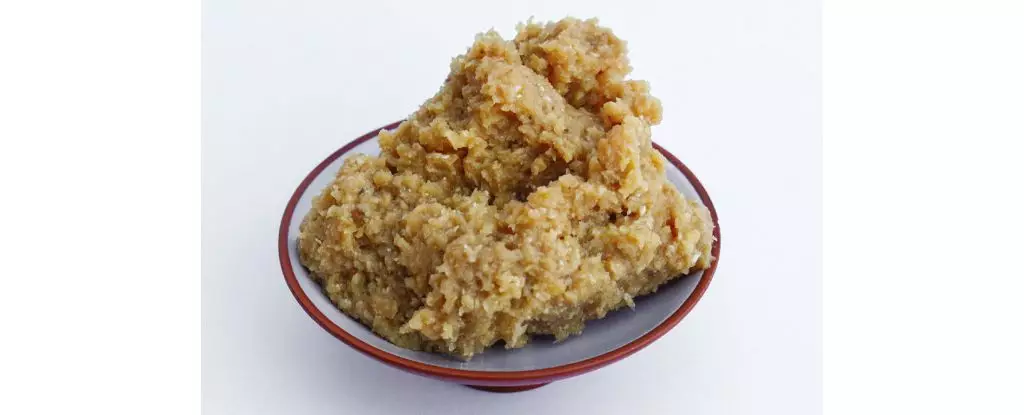The culinary landscape is undergoing a revolution as humanity extends its reach into space. An astonishing experiment has revealed that miso, a traditional Japanese seasoning, develops a unique flavor profile when fermented aboard the International Space Station (ISS). This significant finding does not merely imply a novel gustatory experience; it challenges fundamental perceptions of fermentation and microbial life in extraterrestrial environments. By investigating how miso adapts in microgravity, researchers highlight the profound implications for future space missions and interplanetary habitation.
Fermentation Beyond Bounds
Miso is typically made from soybeans augmented with salt, grains, and the fungus Aspergillus oryzae, which plays a pivotal role in its fermentation. Scientists from institutions like MIT and the Technical University of Denmark recently conducted an experiment, testing simultaneous fermentation of miso on Earth and in low-Earth orbit. The fact that the miso foreshadowed an intriguing transformation in flavor is undoubtedly compelling; however, the significance of this research transcends taste alone. The results exemplify the adaptability of life, emphasizing how microbial communities thrive even in environments traditionally perceived as inhospitable.
While fermentation on Earth is a well-studied process, such off-world experiments serve as the catalyst for new insights into how microorganisms could potentially adapt to different planetary systems. The ISS, commonly associated with sterile conditions, is also a domain where microbial life exhibits remarkable resilience. As researcher Maggie Coblentz notably points out, the study calls into question our assumptions about extraterrestrial environments and the ethical ramifications tied to carrying Earth life beyond its confines.
The Science Behind the Flavor
The experimental setup was methodically designed, sending miso starter batches to three distinct locations: Cambridge, Massachusetts; Copenhagen, Denmark; and the ISS. The fermentation process lasted 30 days, where environmental variables were meticulously monitored aboard the space station. The results revealed that while all three batches shared the expected savory characteristics and common amino acids, the flavor of the ISS miso emerged as notably nuttier and more roasted. These shifts are attributed to the higher temperatures and microgravity conditions that expedite fermentation, causing the creation of pyrazine compounds, responsible for the enrichingly complex aroma and taste.
Such scientific nuances elevate our understanding of flavor chemistry, particularly in how different conditions can foster unique characteristics in foods we often take for granted. By understanding these changes, we open opportunities for enhancing not only the dining experiences of astronauts but also their psychological well-being during lengthy missions.
Microbes in a New Frontier
The microbial diversity found in the various batches of miso provides a fascinating glimpse into how life organizes itself under altered conditions. The study highlighted an increase in specific bacterial populations in the space miso that had not been observed in the Earth-bound counterparts. Species such as Staphylococcus epidermidis and Bacillus velezensis were notably present, suggesting that space’s environmental factors could nurture unique microbial communities. This leads to broader discussions regarding bioethics—how can we ensure that the organisms we take into space are compatible and do not disrupt potential extraterrestrial ecosystems?
In the grander scheme, introducing such microbial life forms to alien regions poses significant questions: What responsibilities do we hold in preserving the balance of ecosystems, both on Earth and potentially on other planets? The notion of interspecies movement raises pressing concerns about barriers between terrestrial and alien life. As we delve deeper into these uncharted territories, we must also expand our ethical considerations.
Exploring Culinary Evolution in Space
Beyond merely enhancing astronaut rations, this study paves the way for understanding how we might cultivate food in space environments—critical for long-term missions, such as those targeting Mars. The intersection of microbiology, flavor chemistry, and nutritional science can lead to rich discussions about creating a sustainable culinary culture on other planets. Scientists like Joshua Evans emphasize that these findings not only reinforce our scientific understanding but also bridge cultural narratives as we prepare for an expanded human presence in the cosmos.
As we embark on this exciting gastronomic journey through the universe, the exploration of flavor and fermentation beckons us to consider our relationship with food in a rapidly changing world. Every experiment, every batch of miso, is a step toward uncovering how we may sustain not just our bodies, but perhaps also our identities, in the vast expanse of space.

